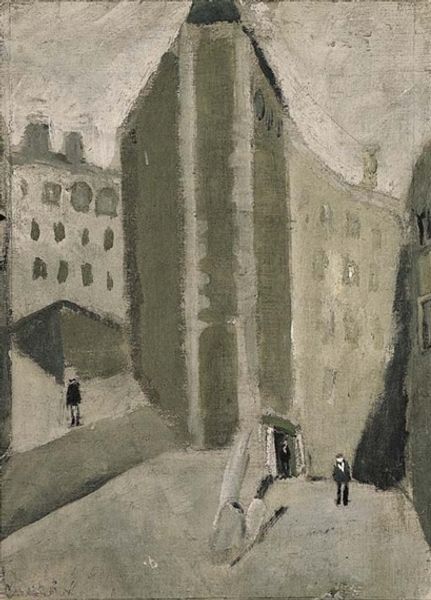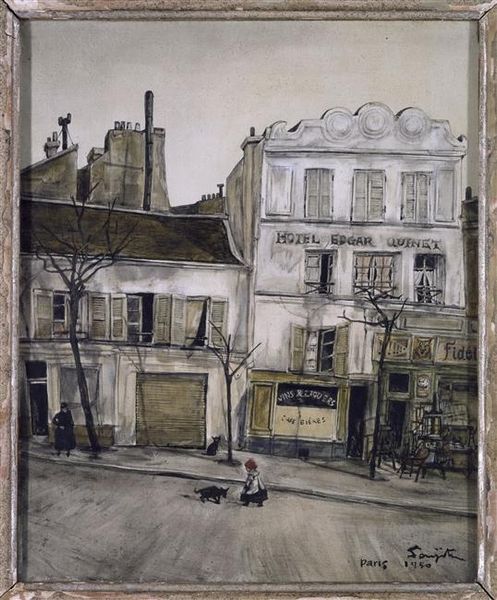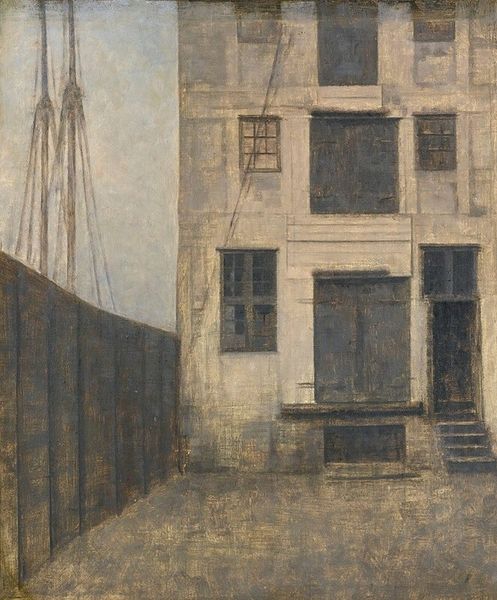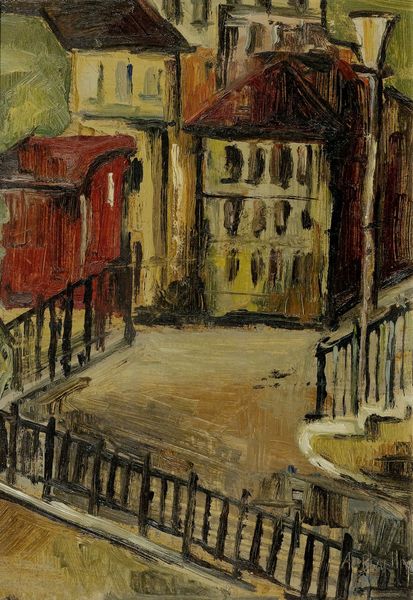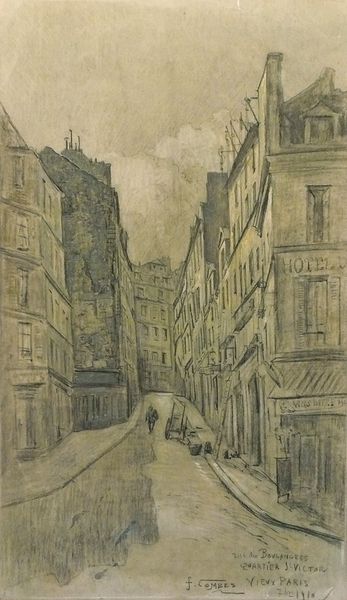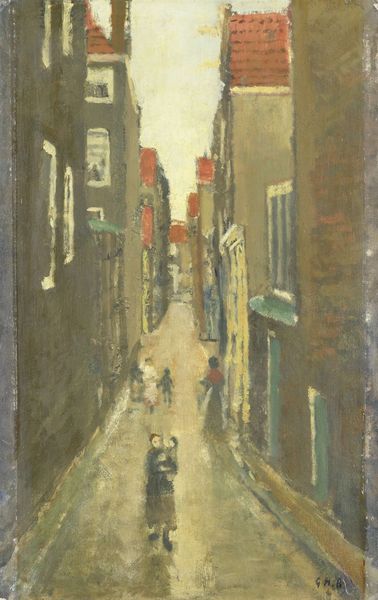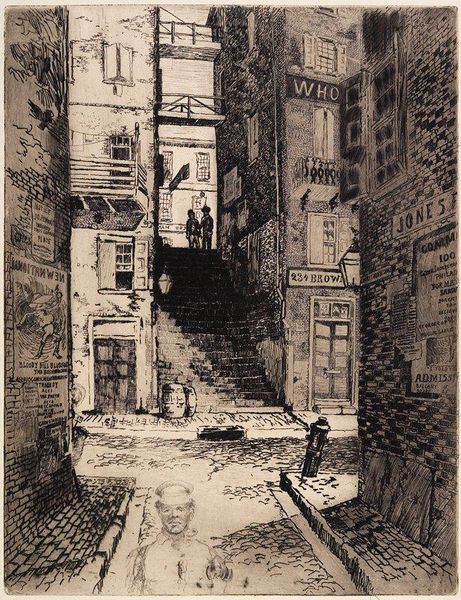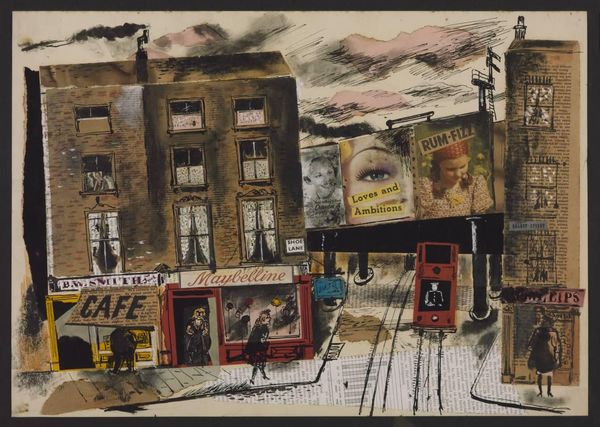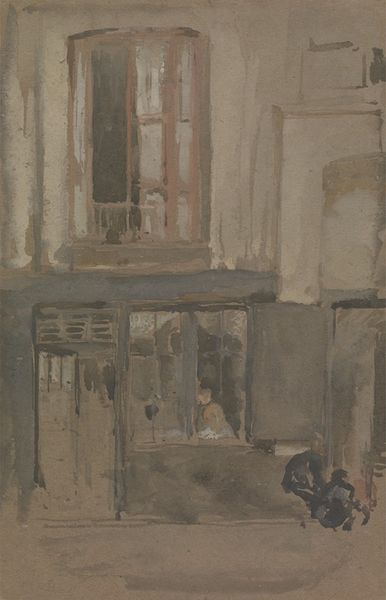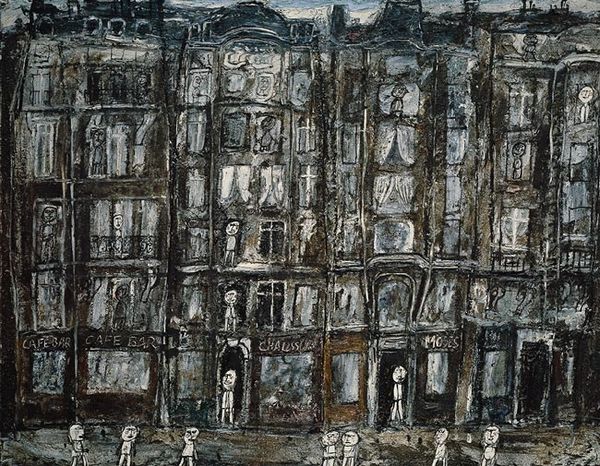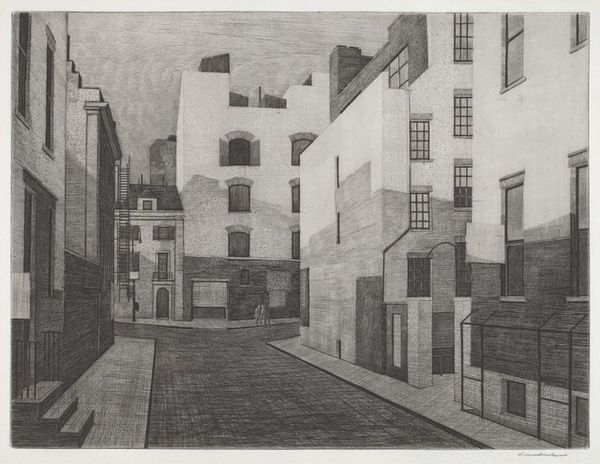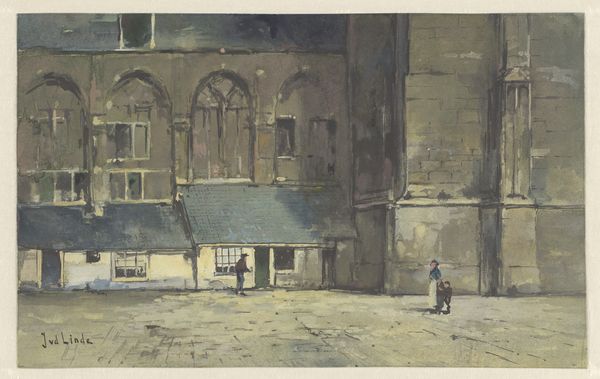
painting, oil-paint
#
painting
#
oil-paint
#
charcoal drawing
#
painted
#
pastel chalk drawing
#
cityscape
#
modernism
#
watercolor
#
realism
Copyright: Varlin,Fair Use
Editor: We're looking at "Poste de police in Paris," painted by Varlin in 1950, using oil paint. The subdued tones create quite a somber mood, don't you think? What do you see in this piece, from a formal perspective? Curator: The interest, for me, lies in the construction of space and form. Notice how Varlin employs a limited palette—primarily muted greens, grays, and browns. How does that strike you? Editor: Well, it certainly unifies the composition, creating a sense of harmony. Is that why he uses it? Curator: Indeed. It's a cohesive strategy that serves to flatten the pictorial space, pushing the building towards the picture plane. The lack of strong tonal contrast denies depth, emphasizing the two-dimensionality of the canvas. Consider, too, the heavy impasto in the sky— a stark contrast to the smoother application on the building itself. What effect does that textural variation create? Editor: It almost makes the sky feel heavier, more present, pushing down on the building. So the formal elements almost become representational through their materiality? Curator: Precisely! The diagonal lines of the streets converge, yet our eye is drawn upwards by the imposing verticality of the building. Varlin creates a dynamic tension, refusing a static, purely representational reading. He subverts realism through a manipulation of form and surface. Editor: I see what you mean. The tension between the flat picture plane and the implied depth creates a really interesting ambiguity. It’s made me rethink how I approach cityscape paintings. Curator: Formal analysis opens up possibilities beyond mere depiction. Now we both see.
Comments
No comments
Be the first to comment and join the conversation on the ultimate creative platform.
